There’s something magical about a big brown bottle of beer. Whether it's a Belgian-style 750ml bottle with a cork and cage, or a bomber with a fancy little foil wrapper over the cap, popping one open is almost a celebration unto itself. Some breweries even dip their bombers in wax to be extra fancy (and evil—dear god, it’s so evil). Sadly, these magical bottles have become more and more rare as it’s become easier and easier to distribute their contents in cans.
So this month, I set out to celebrate these big brown bottles one last time before they officially pass into history. In the process, I scoured Twin Cities metro-area liquor stores, only to find back stock from prior years if I found anything at all. With the exception of a couple beers sold directly by breweries via raffle, etc., I discovered that the big brown bottle was… already effectively dead. Had it not been for Ombibulous in northeast Minneapolis, and Zipps in Seward, I might never have made it out of the resulting fugue state. (No. 6 and No. 1, respectively, in our Minneapolis liquor store rankings, BTW.) Their commitment to carrying the specialty and one-off cans that have taken the place of the big brown bottles of yore saved me from the abyss.
If perhaps you find yourself in that same boat this month, mourning the loss of the big brown bottle, here are five beers that will make you believe that there’s still some magic out there.
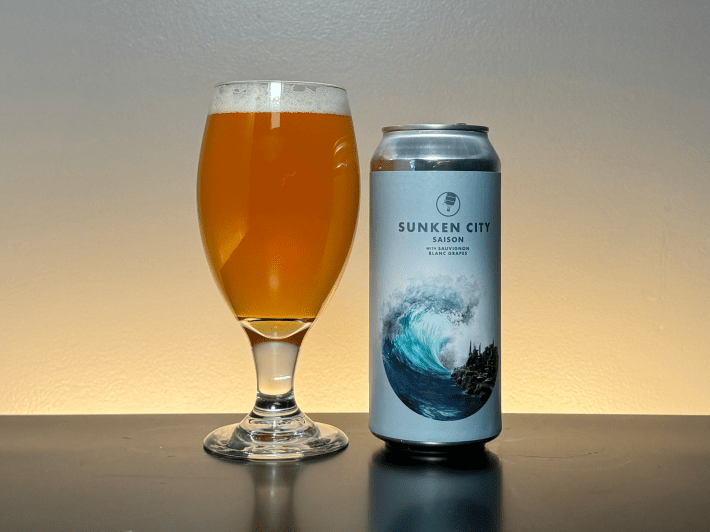
Insight Brewing Company: Sunken City
Saison with sauvignon blanc grapes / 7.8% ABV / 28 IBU
Sunken City belongs to a parent style with a long big brown bottle tradition: the saison. Given saison’s Belgian heritage, you could almost always count on a brewery to throw a saison—especially bigger ones, like this—into a Belgian bottle now and again. This one is mildly bready with a nice grassy fruit character from the grapes. Beers brewed with grapes are often hit-or-miss for me, but the decision to use sauvignon blanc grapes in a saison is a great one. They round out the beer, while also complementing the existing flavor notes you expect from a saison. Would this beer be better if it were in a big brown bottle? Maybe even with a cork and cage? Absolutely. 100%. It would be. But alas, I suppose that beautiful wave illustration on the can will have to make up for it.
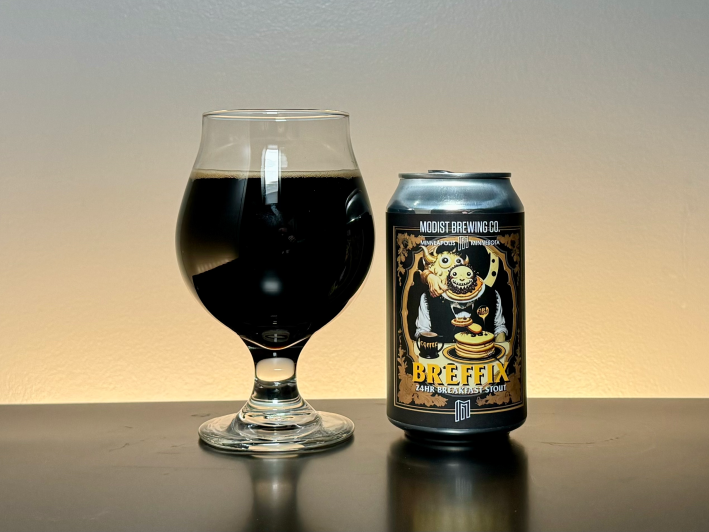
Modist Brewing Co.: Breffix
Breakfast (coffee) stout / 8% ABV / N/A IBU
Coffee and stout are a wonderful combination. Perhaps too wonderful, actually. One of my first exposures to the style came in—you guessed it—a big brown bottle. My partner didn’t like it, so I was left to drink the entire bottle on my own. I ended up drunk, with my heart trying to extricate itself from my chest by beating as rapidly as possible. I thought I was going to die.
Thankfully, this one didn’t leave me fearing for my life—perhaps a side benefit of coming in a 12 oz can. The coffee hits first, followed by maple and roasted malt that dries out on the finish along with a bit of residual sharpness from the coffee. There’s vanilla in the beer as well, and you can smell it, but it doesn’t quite stand up to the other flavors on the palate. I’m already planning the brunch I will drink this at.
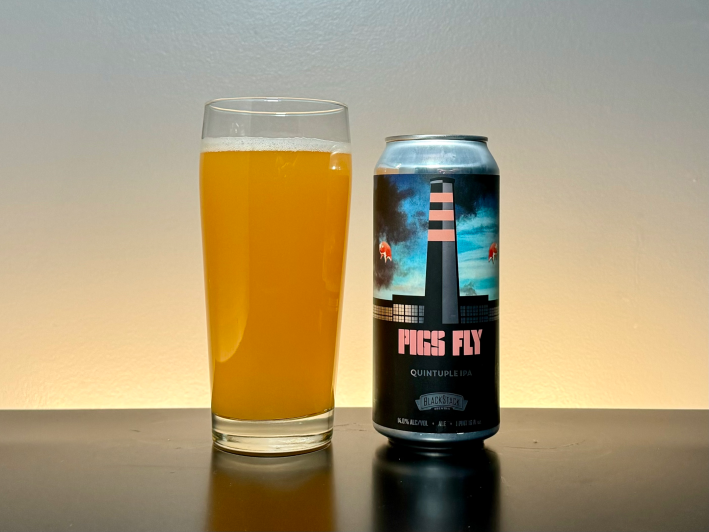
BlackStack Brewing: PIGS FLY
“Quintuple” IPA / 14% ABV / NA IBU
Hazy IPAs aren’t typically associated with big brown bottles. They reached prominence as the bomber era was ending, and you really don’t want a hazy IPA from a bottle anyway. There’s too much risk of oxidation, and a high potential for negative impacts caused by being exposed to UV light, with the beer ending up skunky instead of spunky (a condition referred to as “lightstruck”). That said, a “Quintuple” IPA—a style that largely only exists in the crazed minds of BlackStack’s brewers—is so thoroughly aligned with the spirit of the big brown bottle that I was forced to make an exception.
Coming in at 14% ABV, BlackStack is pushing the limits of what beer yeasts can handle, and there’s definitely a good bit of residual sweetness here (which might be intentional). Regardless, it’s good. The citrus and fruit from the hops come through well, and it’s honestly hard to tell it’s 14%—until you're part-way through, that is.
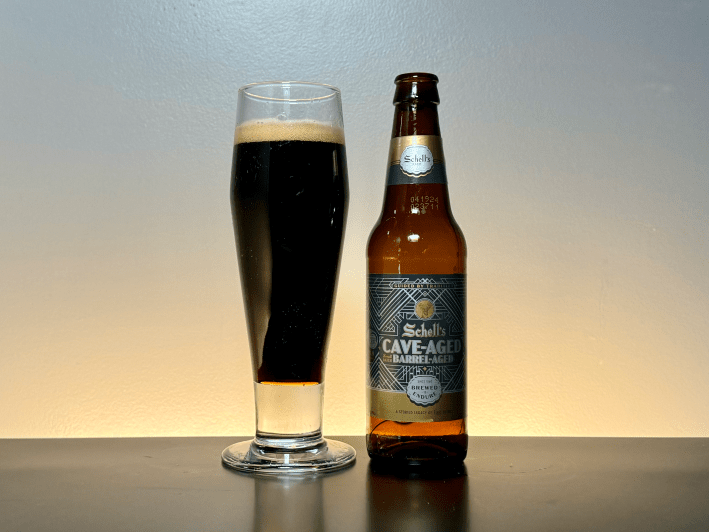
Schell’s Brewery: Cave-Aged Barrel-Aged 2023
Dark lager / 10% ABV / NA IBU
I admit to having a soft-spot for Schell’s. A soft spot formed in the dark corners of Patrick’s on Third (or just “Patrick’s,” or “Patty’s” as we always called it) down in St. Peter. When I was in college at Gustavus, there was a time where you could order a Schell’s at Patrick’s and pay a little extra to keep the glass with the iconic Schell’s deer logo screen printed on it in red. I made sure I got two—just in case one broke. They both broke, but it took a few years and a few moves. C’est la vie.
This beer is nothing like anything I drank from Schell’s back then. If I wanted to make any comparisons, I might say “Schell’s Dark, but big.” But then, this isn’t that. It’s much more. This beer is incredibly smooth, with very mild roast and whiskey rounding out the slightly sweet malt flavor. “Velvety” would be one way to describe it.
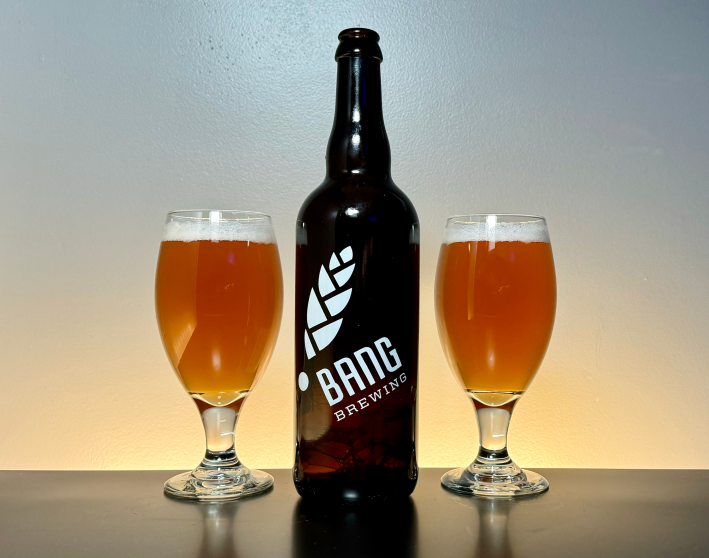
Bang Brewing: Farm
Farmhouse (saison) / 5.7% ABV / 30 IBU
So, I can’t write a column mourning the loss of the big brown bottle without mentioning Bang Brewing out of St. Paul (my favorite suburb of Minneapolis). Bang only distributes their beer in kegs and returnable 750ml bottles. This choice is due to Bang’s commitment to sustainability—glass is the more sustainable option, especially assuming it gets returned to the brewery—but the knock-on effects of being super rad, and making me believe that the big brown bottle will rise again cannot be denied.
You could throw just about any of Bang’s beers in this spot on the list, but Farmhouse is the most closely aligned with what I think of when I think of the magic of big brown bottles (because it’s a Belgian style), so here we are. Farm skews phenolic with a nice clove and spiciness to it, which is probably at least partly due to their use of Kernza, a perennial grain being developed by the Land Institute and the University of Minnesota (among others) that has a spicy note to it when used in beer. There’s also a bit of the typical banana and green apple aroma you might expect with farmhouse beers. It all adds up to something that might make folks believe in the big brown bottle yet.







